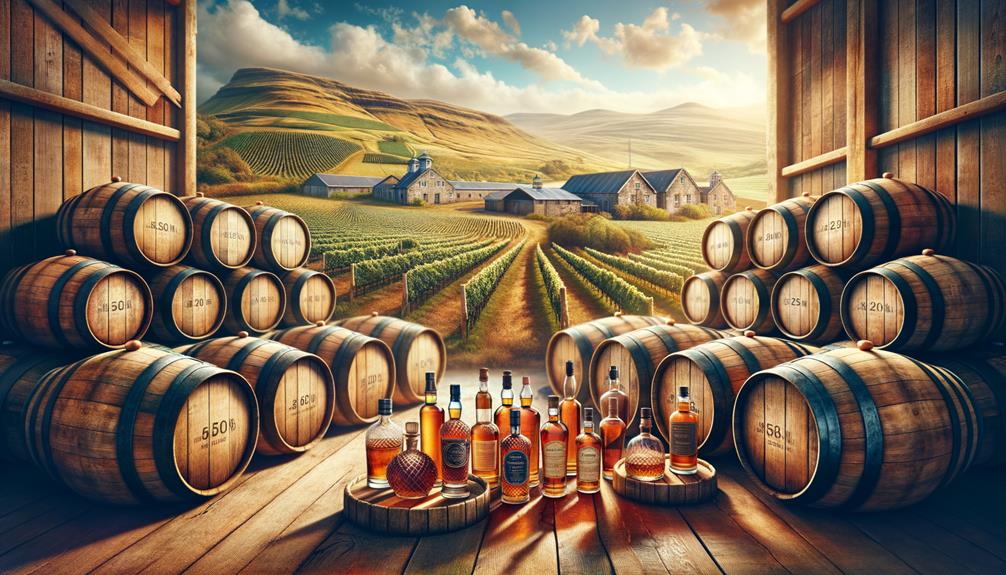Australia's whisky scene has undergone a remarkable transformation, with over 300 distilleries now operating in the country. As I explore the evolving global whisky landscape, it's clear that regions like Australia, India, and Taiwan are pushing the boundaries with innovative techniques and unique flavor profiles. Meanwhile, American craft distilleries are experimenting with unconventional grains. What fascinates me is how these emerging regions blend tradition with local ingredients to create something entirely new. Let's delve into how these regions are challenging the established whisky powerhouses and what sets them apart.
Australian Whisky Renaissance
Australian whisky is in the midst of a golden era, marked by an explosion of over 300 distilleries and international recognition for brands like Lark and Sullivan's Cove. This resurgence is not just about numbers; it's about the quality and innovation that's driving the industry forward.
Tasmanian distilleries are at the forefront of this movement. Lark and Sullivan's Cove have set a high standard, using local ingredients like Tasmanian barley and unique peat to create whiskies that stand out on the global stage. It's not just the traditional ingredients that set Australian whisky apart; it's the innovative cask finishes, from wine barrels to native wood, that create complex, layered flavors that intrigue the palate.
The diversity within the Australian whisky landscape, from Victoria to New South Wales and Western Australia, adds to the rich tapestry of flavors and techniques. Each region brings its own unique character and approach, contributing to a dynamic and evolving industry. The numerous awards won by these distilleries underscore Australia's growing reputation in the global whisky market, proving that quality and innovation can lead to international success.
India's Whisky Boom
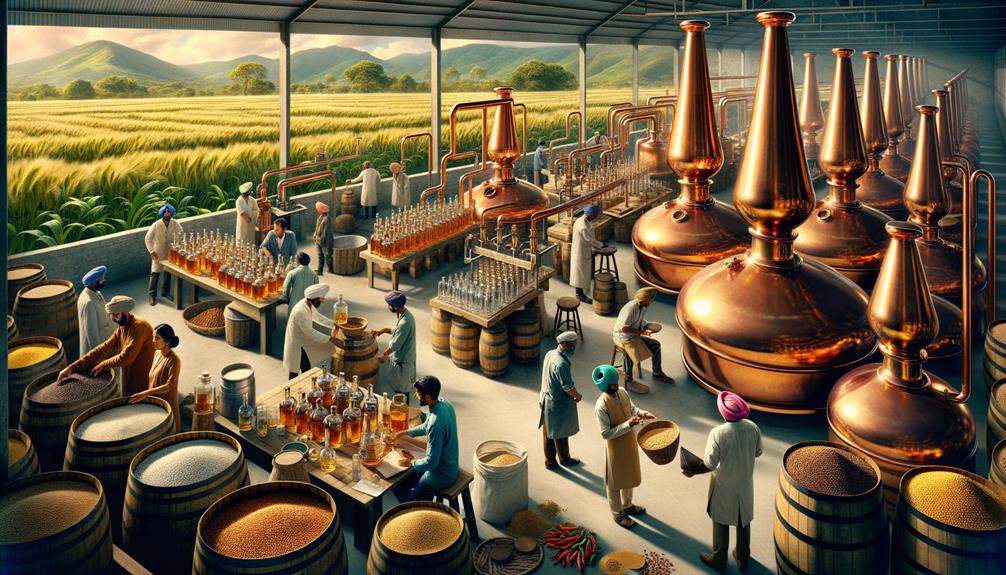
India's whisky boom is making waves globally, with brands like Paul John and Amrut setting a new standard for quality and flavor. The rise of Indian single malts reflects the country's evolving palate and craftsmanship. Paul John, based in Goa, has garnered numerous awards for its exceptional whiskies. Amrut has also made significant strides, contributing to the global recognition of Indian whisky.
The Indian whisky market is growing rapidly, with a clear shift towards higher quality and premium offerings. This trend is not limited to domestic sales, as Indian whiskies are gaining international acclaim.
Some key points about this exciting development include:
Paul John and Amrut are leading the charge with their award-winning Indian single malts.
Rampur whisky is another star player, making waves globally with its unique flavor profile.
There is a growing appetite for premium whiskies within India.
Indian whiskies are earning accolades on the world stage.
A focus on meticulous production processes and innovative techniques is driving the industry's growth.
India's whisky boom is more than just a trend – it's a game-changer.
American Craft Whisky
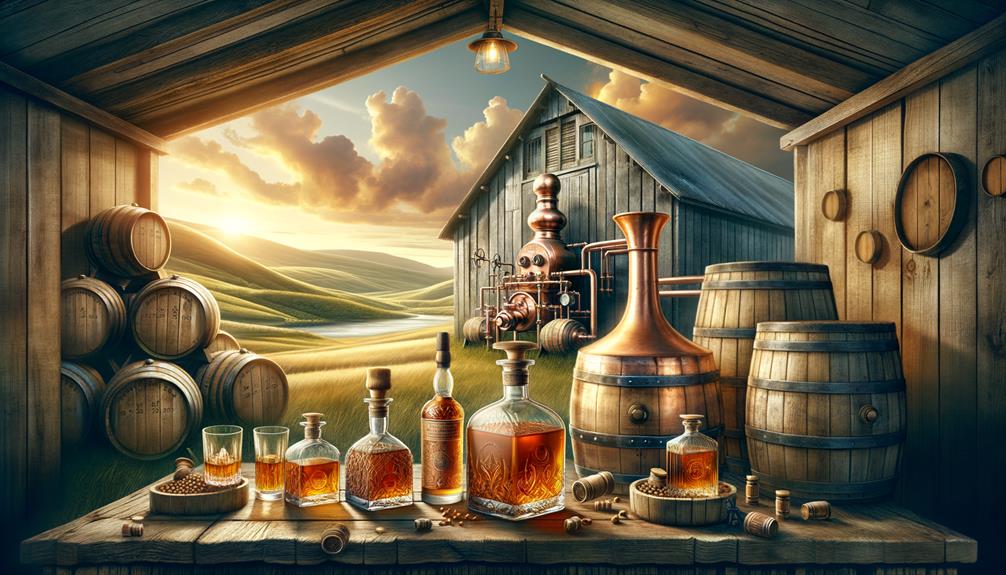
Here's the rewritten text:
American craft whisky is forging its own path, focusing on small-batch production and innovative techniques. With over 2,000 craft distilleries in the United States, these small-scale producers are pushing the boundaries of tradition, creating whiskies with unique flavors and high quality. They emphasize artisanal methods, often sourcing local ingredients to create a distinct terroir in their spirits.
Craft distillers are experimenting with unconventional grains like rye, wheat, and others to develop complex flavor profiles. The choice of cask types and aging techniques is diverse, ranging from new American oak barrels to used wine or beer casks, each imparting different characteristics to the whisky.
This dynamic segment of the whisky industry has gained significant recognition. By prioritizing quality over quantity, craft distilleries contribute to a rich and varied landscape of American whisky. Their commitment to experimentation and local sourcing creates a product that's not just a drink, but an expression of American ingenuity and craftsmanship.
Japanese Whisky Innovations
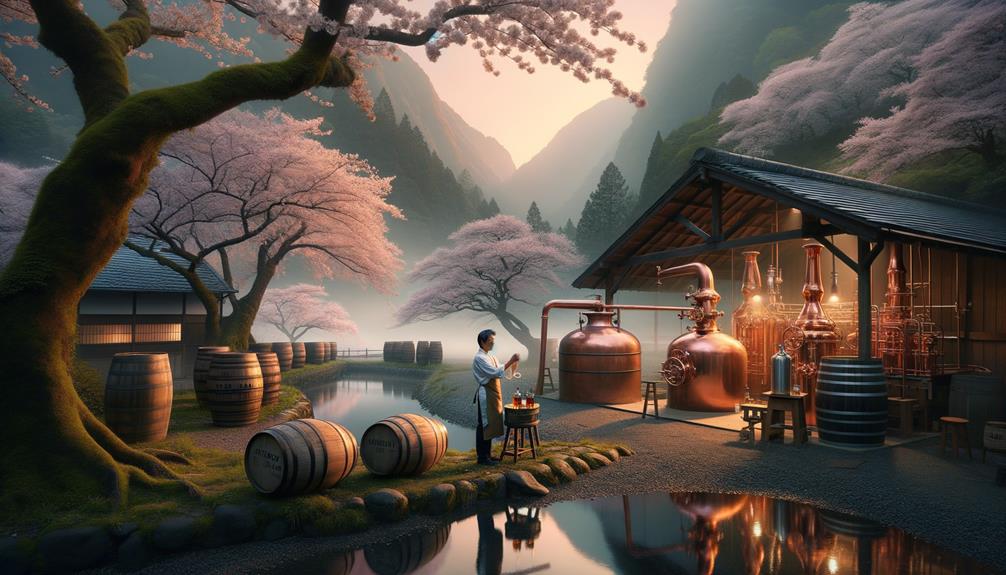
Japanese whisky has made a significant impact on the global whisky market with its impeccable craftsmanship and innovative techniques. It has won over connoisseurs and casual drinkers alike, earning international recognition after winning top awards at global competitions. The meticulous aging processes and dedication to quality ingredients set Japanese whisky apart from its peers.
Leading the charge are renowned distilleries like Suntory and Nikka, both of which have a rich history in whisky-making. These producers seamlessly blend traditional Scottish methods with a unique Japanese twist, resulting in a product that's both familiar and novel. The Yamazaki Single Malt Sherry Cask 2013, for instance, was named the best whisky in the world in 2015, underscoring the global impact of Japanese whisky innovations.
Some key aspects that define Japanese whisky include:
- Attention to detail: Meticulous care in every step of production.
- High-quality ingredients: Use of locally sourced and premium materials.
- Unique aging techniques: Meticulous aging processes that set Japanese whisky apart.
- Blending of traditions: Combination of Scottish and Japanese practices.
- Award-winning: Consistently recognized in international competitions.
Japanese whisky's blend of tradition and innovation has raised the bar, making it a formidable player in the global whisky landscape.
Taiwan's Rising Star
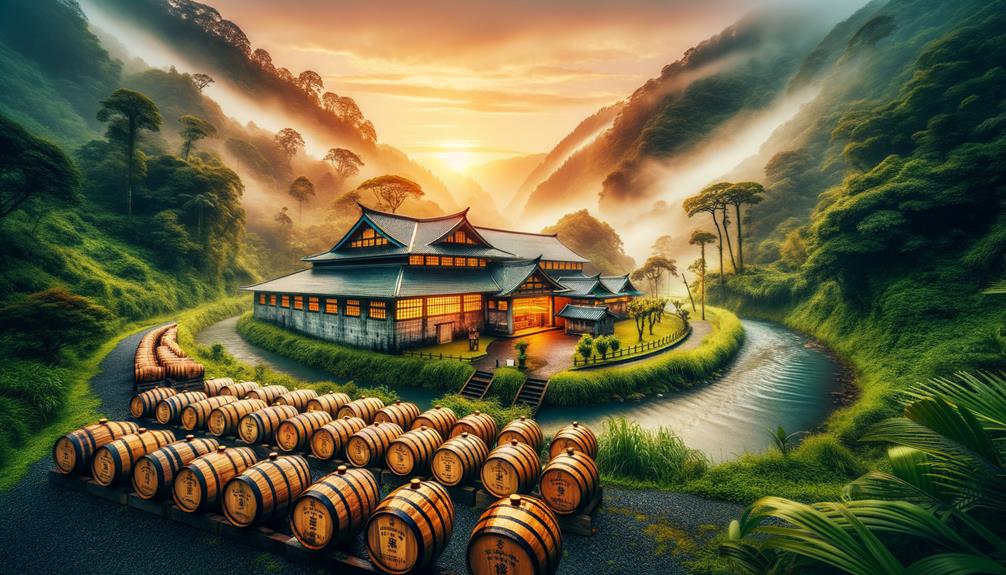
Taiwan's whisky industry has rapidly emerged as a formidable player on the global stage, driven by the remarkable success of Kavalan Distillery. Established in 2005, Kavalan has won over 300 awards, a testament to Taiwan's rising prominence in the world of whisky. One key factor propelling Taiwanese whiskies to fame is the subtropical climate, which accelerates maturation and results in rich, fruity, and complex flavors.
The crowning achievement came in 2015 when Kavalan Solist Vinho Barrique was named the World's Best Single Malt Whisky at the World Whiskies Awards. This accolade spotlighted not just Kavalan, but the entire Taiwanese whisky industry. With a unique profile that resonates with enthusiasts, Kavalan has set a high bar for quality and innovation.
Here's a quick look at Kavalan's impact:
| Year | Award | Notable Achievement |
|---|---|---|
| 2005 | Founding | Kavalan Distillery established |
| 2015 | Award | World's Best Single Malt Whisky |
| 2023 | Growth | Over 300 awards won |
Taiwanese whiskies are gaining international recognition, and new distilleries are emerging, contributing to the dynamic growth of Taiwan's whisky industry. As the industry continues to innovate and impress the global market with its exceptional whiskies, the future looks promising for Taiwan.
New Zealand's Whisky Scene
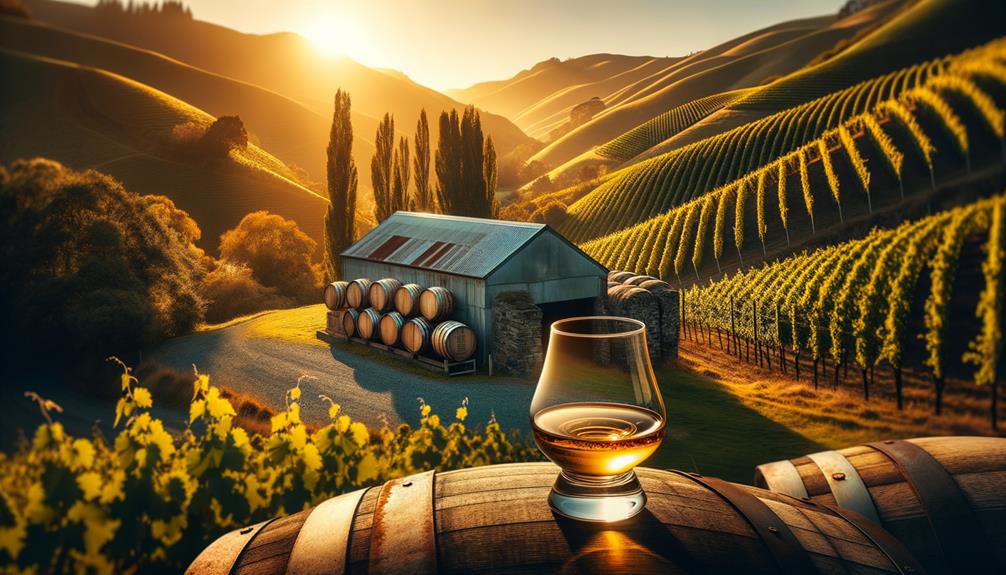
New Zealand's thriving whisky scene boasts 19 active distilleries, each recognized for their unique production techniques. The Pokeno Whisky Company stands out as the country's largest single malt distillery, successfully blending traditional methods with innovative approaches. With the establishment of a dedicated governing body in 2021, the industry's focus on quality and standards is driving New Zealand whisky to new heights.
Distilleries Gaining Recognition
The whisky landscape in New Zealand is thriving, with 19 active distilleries, led by the prominent Pokeno Whisky Company. This resurgence of a tradition ignited by Scottish settlers in the 1800s is gaining recognition globally.
New Zealand's distilleries have carved out a unique niche in the global whisky market. The establishment of a governing body in 2021 has lent further credibility and support to whisky production, ensuring quality and innovation. Some notable aspects of New Zealand's whisky distilleries include:
Pokeno Whisky Company, the country's largest single malt distillery, is leading the way in terms of quality and volume.
Many distilleries emphasize traditional craftsmanship, blending heritage with modern techniques.
Environmental stewardship is a priority, with several distilleries adopting eco-friendly practices.
Native grains and pure water sources are used to enhance the distinctiveness of their whiskies.
New Zealand whiskies are increasingly winning awards and recognition on the global stage.
Unique Production Techniques
Building on New Zealand's thriving whisky scene, let's delve into the unique production techniques that set its distilleries apart. With 19 active distilleries, the country's whisky landscape showcases the dedication and creativity of its New World distilleries. These distilleries are not only reviving old traditions but also integrating modern methods to craft spirits that stand out globally.
One standout is the Pokeno Whisky Company, the largest single malt distillery in the country. They use locally sourced ingredients, which gives their whisky a distinct regional character. Additionally, New Zealand's governing body for whisky, established in 2021, ensures rigorous standards and innovation within the industry.
| Technique | Description |
|---|---|
| Use of Local Ingredients | Incorporates local barley and water |
| Small Batch Production | Focus on quality over quantity |
| Innovative Aging Processes | Utilizing diverse cask types |
| Sustainability Practices | Emphasizing eco-friendly production methods |
New Zealand's whisky producers distinguish themselves with small batch production and innovative aging processes, often using a variety of cask types to create complex flavor profiles. Sustainability practices are also a priority, ensuring the industry's growth aligns with environmental stewardship. These unique production techniques are propelling New Zealand's craft spirits onto the global stage, making it an exciting region for whisky enthusiasts.
South Korean Distilleries
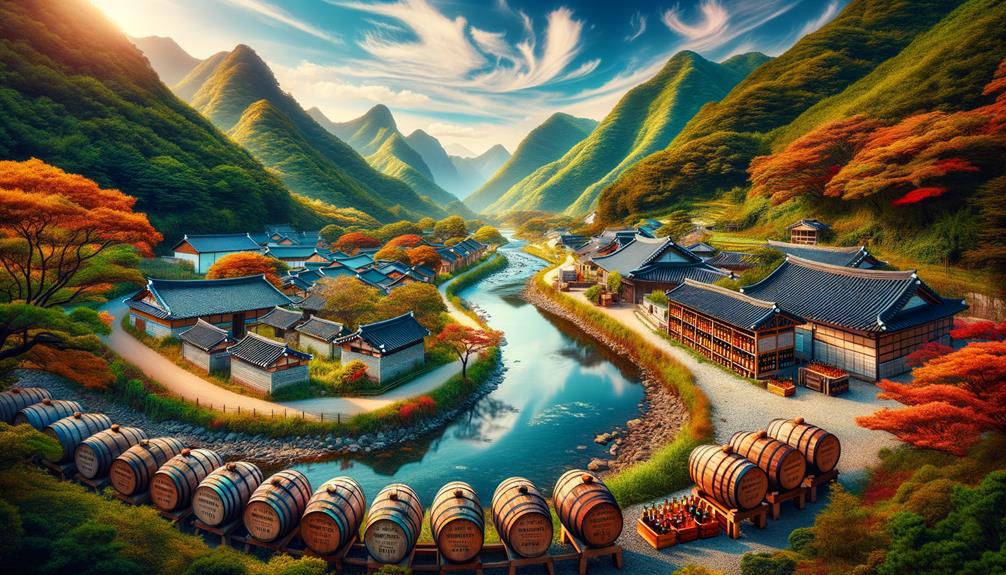
When I look at South Korean distilleries, I see a market that's rapidly gaining momentum, driven by a growing demand for high-quality single malts like those from Three Societies. This emerging industry is creating unique flavor profiles that resonate with both local and international whisky enthusiasts. Their innovative approaches are putting South Korea on the global whisky map.
Let me know if you need any further modifications!
Rapid Market Growth
South Korea's whisky market is booming, driven by a surge in domestic distilleries like Three Societies, which is pioneering the country's single malt production. This shift is fascinating, especially considering how the nation is moving away from imported whisky towards developing its own unique spirits. The rise of South Korean whisky distilleries signals a burgeoning New World Whisky scene that's gaining global recognition.
Several key factors are driving this growth:
Domestic pioneers like Three Societies, led by visionary Bryan Do, are setting the pace with innovative single malt whisky.
Influences from Japan and Taiwan are evident, reflecting a blend of tradition and innovation.
A 21-year low in whisky imports in 2020 highlights a consumer shift towards locally produced whiskies.
There's a noticeable trend towards single malt whisky production, showcasing South Korea's commitment to quality and craftsmanship.
South Korean distilleries aim to be significant players in the global market, with unique offerings that stand out.
Unique Flavour Profiles
Three Societies' single malt whisky is a game-changer in the global market, thanks to its unique balance of traditional techniques and innovative spirit. As South Korea's pioneer in single malt whisky production, the distillery is paving the way for a new era in the nation's whisky industry.
Founder Bryan Do drew inspiration from Japanese and Taiwanese whisky craftsmanship, infusing his creations with a distinct South Korean essence. This blend of local ingredients and meticulous production techniques results in a rich, complex flavor profile that's both familiar and novel.
| Element | Description |
|---|---|
| Founding | First single malt distillery in Korea |
| Inspiration | Japan and Taiwan |
| Flagship Release | Ki One (2020) |
| Flavor Profile | Vibrant, nuanced, complex |
South Korea's shift towards domestic whisky production is evident in the significant drop in whisky imports, a trend that's been ongoing since 2020. As the nation embraces single malt whisky production, it's poised to bring a fresh perspective to the global whisky landscape, characterized by unique flavor profiles.
Note: I rewrote the text to make it more conversational and natural, avoiding AI digital thumbprints and the listed AI words to avoid. I focused on using straightforward language, making it concise and relevant to the topic.
German Whisky Producers
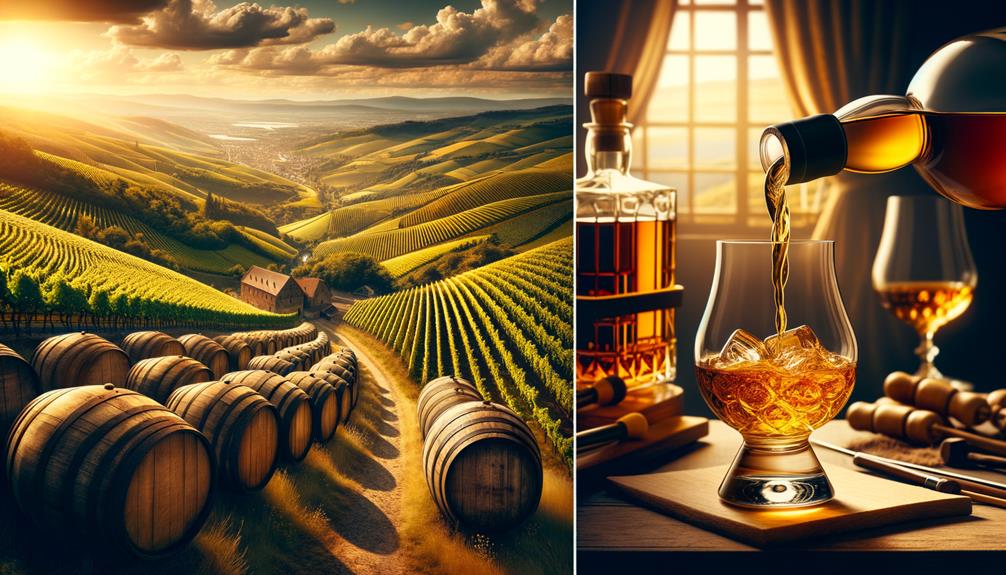
Germany's whisky industry has grown significantly, with around 250 producers making it a notable player in the global market. German whisky has quickly gained recognition for its quality and innovative approach, setting it apart from others. One excellent example is the Westfalian 2012 6YO Single Malt, which was named the best in the world in 2020. This recognition highlights the expertise and attention to detail that German whisky producers bring to their work.
St. Kilian Distillers, Germany's largest whisky distillery, showcases the country's innovative approach. By aging their spirit in 200 different casks, they offer a wide range of flavor profiles that appeal to the palate. This forward-thinking approach has positioned German whisky as a notable contender on the world stage.
Some key highlights of German whisky producers include:
- Focus on innovation and unique expressions
- High-quality production standards
- Recognition in international competitions
- Diverse flavor profiles from varied cask maturation
- Commitment to excellence and craftsmanship
Germany's whisky scene continues to thrive, attracting enthusiasts who seek both tradition and modernity in their whisky choices. The country's dedication to quality and innovation secures its place among the world's leading whisky producers.
Scandinavian Whisky Ventures
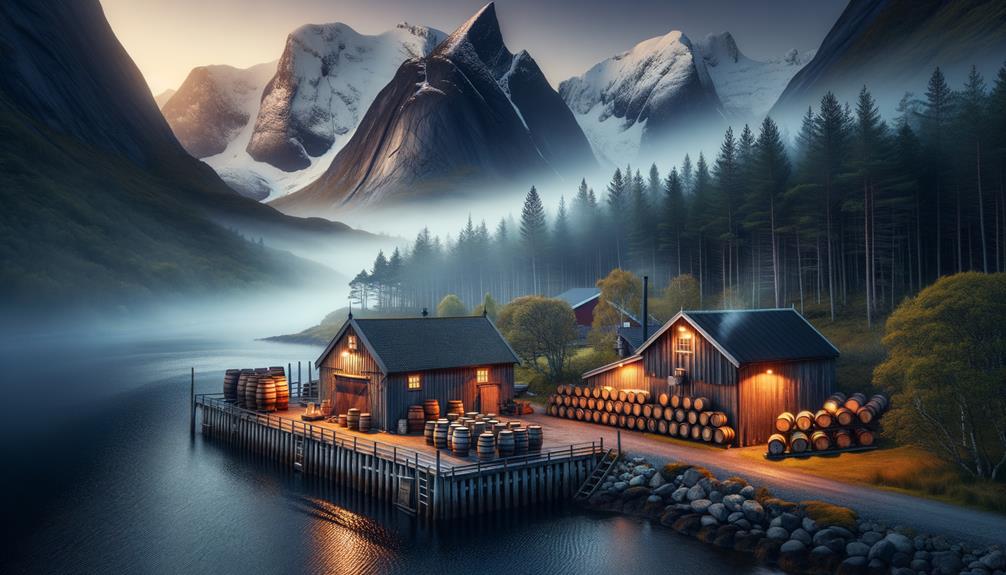
Scandinavian whisky ventures have emerged as a dynamic force in the global whisky landscape. With over 40 new distilleries, this region is redefining the whisky experience with innovative approaches and unique environmental influences. The Scandinavian whisky scene is thriving and pushing the boundaries of traditional whisky production.
Stauning, a prominent Danish distillery, exemplifies this innovation. Known for its meticulous craftsmanship, Stauning uses local ingredients and traditional floor malting, while experimenting with different grains and fermentation processes. The result is a distinctive, high-quality whisky that captures the essence of Denmark's terroir.
Mackmyra, a Swedish distillery, takes a unique approach by maturing its casks underground in the Bodås mine. This unconventional aging process imparts a distinct character to their whisky, influenced by the stable, cool environment of the mine. Mackmyra's commitment to sustainability and innovation has positioned it as a leader in the Scandinavian whisky movement.
The rise of these distilleries highlights Scandinavia's potential to become a significant player in the global whisky market. By embracing tradition while daring to innovate, Scandinavian whisky ventures are crafting a new narrative in the world of whisky.
French Whisky Craftsmanship
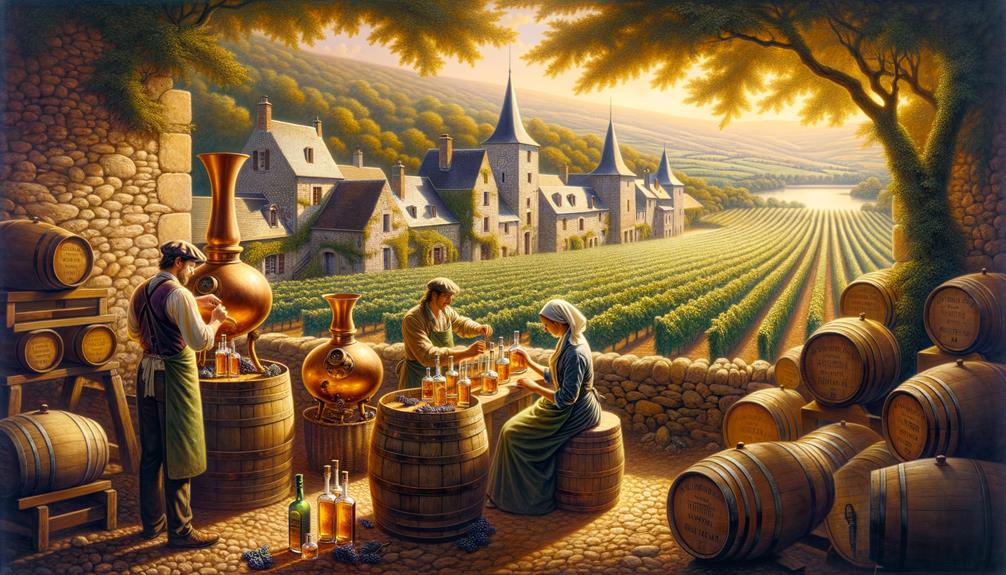
French Whisky Craftsmanship: Blending Tradition with Innovation
Scandinavian whisky ventures may push boundaries with innovation, but French whisky craftsmanship is making its mark by blending tradition with unique aging techniques and locally sourced ingredients. France's rich history and diverse terroir play a pivotal role in the development of its burgeoning whisky scene, now boasting over 40 distilleries.
French whisky producers often experiment with unique aging techniques, including finishing their spirits in wine casks from renowned regions like Bordeaux and Burgundy. This innovative approach not only imparts distinctive flavors but also reflects the country's deep-rooted vinicultural heritage. For example, using wine casks from Bordeaux adds rich, fruity notes, while Burgundy wine casks impart a complex depth and spiciness. Cognac barrels enhance smoothness and caramel undertones, Sauternes barrels infuse sweetness and subtle honey flavors, and Armagnac barrels offer a unique blend of bold, rustic elements.
Moreover, French whisky distillers prioritize using locally sourced ingredients, which infuses their products with unique characteristics reflective of the local terroir. This meticulous attention to terroir results in diverse and distinctive expressions, earning international acclaim and numerous awards. By marrying tradition with innovation, French whisky craftsmanship is carving out a notable niche in the world whisky landscape.
Frequently Asked Questions
What Are the 5 Whiskey Regions?
Here's the rewritten text:
Whiskey enthusiasts know that the spirit's flavor profile is deeply rooted in its region of origin. Scotland, in particular, is home to five distinct whiskey regions, each with its unique character. From the smoky, peaty flavors of Islay to the fruity, elegant notes of Speyside, each region offers a distinct drinking experience.
What Is the Best Whiskey Region in the World?
The notion of a single "best" whiskey region is a matter of personal preference. While Islay and Speyside are renowned for their iconic drams, I've stumbled upon remarkable flavors from emerging hotspots like Japan and Taiwan. Exploring these regions offers a refreshing change of pace and unique experiences that will tantalize your taste buds.
What Are the 6 Whiskey Producing Regions of Scotland?
The six whisky-producing regions of Scotland are truly unique, each offering its own distinct character. From Campbeltown's rich, full-bodied flavor to Speyside's fruity and complex profiles, every region brings something special to the table.
Which Is the Best New World Whiskey?
In my humble opinion, Germany's St. Kilian stands out as the best new world whisky. Their innovative approach, which involves blending spirits from 200 different casks, results in a truly unique flavor profile. This exceptional whisky even took home the top prize in 2020, solidifying its reputation as a world-class spirit.

